 |
 |
 |
| |
Antiretrovirals Have Not Banished Brain Injury in 7-Center US Imaging Study: brain damage persists despite HAART- inflammation and neuronal damage
|
| |
| |
16th Conference on Retroviruses and Opportunistic Infections,
February 8-11, 2009, Montreal
Mark Mascolini
Brain injury persists in antiretroviral-treated people with stable HIV infection, according to results of a seven-center, 268-person analysis by the US-based HIV Neuroimaging Consortium [1]. Among HIV-infected people without symptoms of neurologic disease, imaging showed diffuse inflammatory changes.
Because the impact of potent antiretroviral therapy on the brain in people with stable HIV infection remains unknown, the HIV Neuroimaging Consortium undertook a study of 268 people with a lowest-ever (nadir) CD4 count below 200 who had been taking antiretroviral therapy for at least 1 year. The investigators also aimed to determine whether any benefits of antiretroviral therapy persist and whether brain pathology and cognitive impairment can develop in otherwise asymptomatic people. This prospective study excluded people taking illicit drugs and people with confounding neurologic, psychiatric, or medical disorders, including hepatic, renal, or diabetic disease.
Consortium researchers evaluated study participants at a baseline visit and then every 6 to 8 months. Exams included (1) neurological, neuropsychological, and medical assessment, (2) AIDS dementia complex (ADC) staging, Global Deficit Score, and quality of life measures, (3) magnetic resonance imaging (MRI) and magnetic resonance spectroscopy (MRS), and (4) blood plasma and cerebrospinal fluid (CSF) viral load and biomarker assessment. Brain scans were used to determine the N-acetyl aspartate (NAA)/creatinine (Cr) ratio (a neuronal biomarker) and choline (Cho)/Cr ratio and myoinositol (MI)/Cr ratio (inflammatory markers) in basal ganglia, frontal white matter, and mid-frontal cortex.
The study group included 28 HIV-negative controls, 124 people with ADC stage 0, 66 with ADC stage 0.5, and 50 with ADC stage 1 or higher. The groups were not balanced by gender (36% male in the control group vs about 85% male in the HIV groups, P < 0.001) or age (53 in the control group versus 47 in the HIV groups, P = 0.001). Racial distribution varied widely across all five groups, as did education level. Among people with HIV, infection had lasted a median of 12 years, median CD4 count stood at 309, median nadir count at 34, median plasma load at 177 copies, and median CSF load at 68 copies, with no significant differences between groups.
About 80% of HIV-infected people were taking antiretrovirals at the baseline evaluation, with about half taking a protease inhibitor-based regimen. Median central nervous system (CNS) penetration-effectiveness (CPE) score [2] was 2 in the ADC stage 0 group and the ADC stage 0.5 group, and 1.5 in the ADC stage 1 or higher group, a nonsignificant difference (P = 0.6).
Compared with HIV-negative controls, the combined HIV group had higher MI/Cr in all three regions, higher Cho/Cr in mid-frontal cortex, and lower NAA/Cr in frontal white matter (these are mrkers: NAA/Cr is a neuronal marker; Cho/Cr, MI/Cr inflammatory markers).
Among people with HIV, NAA/Cr declined significantly over time in frontal white matter (P = 0.0043) and basal ganglia (P = 0.0051), but not in mid-frontal cortex. Cho/Cr rose significantly in mid-frontal cortex of people with HIV (P = 0.0294) but remained flat in the other two regions. MI/Cr rose significantly in frontal white matter (P = 0.0113) and mid-frontal cortex (P = 0.0223) but not in basal ganglia.
Summarizing this part of the analysis, Bradford Navia concluded that Cho/Cr and MI/Cr, reflecting inflammatory processes, occur at all stage of HIV infection independent of cognitive status. People without neurologic symptoms showed diffuse inflammatory changes, whereas frank neuronal injury occured in people with cognitive impairment. Decreasing NAA is "a critical event and may provide a sensitive biomarker of the extent of structural and functional change in the brain." Taken together, these results suggested that brain injury persists in HIV-infected people taking antiretroviral therapy for chronic disease.
Next Navia and colleagues created 12 models to analyze four metabolites in the three brain regions incorporating demographics (age, gender, race, education) and disease-specific variables (ADC stage, HIV duration, nadir and baseline CD4 count, plasma and CSF viral load, and CPE score). In the best predictive model, reduced NAA/Cr in basal ganglia was associated with ADC stages 1 to 3 and detectable plasma viral load. In addition, reduced NAA/Cr in frontal white matter was associated with age and the interaction between detectable plasma RNA and nadir CD4 count. And increased MI/Cr in frontal white matter was associated with detectable plasma load and the interaction between ADC stage 1 to 3 and age.
The analysis identified four metabolic patterns of brain injury and ADC risk:
• Basal ganglia containing NAA/Cr and Cho/Cr
• A neuronal factor--NAA/Cr in frontal white matter and mid-frontal cortex
• An inflammatory factor--Cho/Cr in frontal white matter and mid-frontal cortex
• Another inflammatory factor--MI/Cr in all three regions
Of these four patterns, logistic regression analysis isolated only the first as a significant predictor of ADC stage. But ROC curve analysis suggested only moderate predictive ability. Adding clinical variables to MRS factors did not identify other variables associated with ADC.
Navia proposed that these findings suggest a two-stage model of brain injury--inflammatory processes followed by basal ganglia disease as ADC is developing. He concluded that the biomarker study suggested "the ubiquitous presence of inflammation in all stages of [HIV] infection as a sufficient, but not a necessary condition for ADC."
References
1. Navia B, Harezlak J, Buchthal S, et al. Persistence of HIV-related brain injury in the HAART era: a multicenter proton magnetic resonance spectroscopy study. 16th Conference on Retroviruses and Opportunistic Infections. February 8-11, 2009. Montreal. Abstract 156.
2. Letendre S, Marquie-Beck J, Capparelli E, et al. Validation of the CNS penetration-effectiveness rank for quantifying antiretroviral penetration into the central nervous system. Arch Neurol. 2008;65:65-70.
"These patterns underline the ubiquitous presence of inflammation in all stages of infection as a sufficient, but not necessary condition of ADC. These observations suggest a 2-stage model of brain injury: inflammatory processes followed by basal ganglia disease in subjects developing ADC"......."HIV-infected patients continue to show patterns of brain injury in the setting of chronic and stable disease (on HAART) that mirror those previously described in the pre-HAART era. Certain host (age, nadir CD4) and viral (CSF RNA) but not others (CPE, baseline CD4) and their interactions may have a strong effect on risk for brain injury. Basal ganglia involvement and neuronal injury remain significant factors in the development of HIV cognitive impairment in the setting of ART and chronic disease)."..... "This baseline data analysis, which were adjusted for differences in age and gender, show significant inflammation in patients who were near aymptomatic across all brain regions. Subjects who were cognitively impaired showed similar patterns of inflammation in the 3 brain regions, in addition they also showed decreases in the neural marker in the frontal white matter. When one compares the cognitively impaired patients to the neurologically asymptomatic patients the only difference is in the neuronal marker"
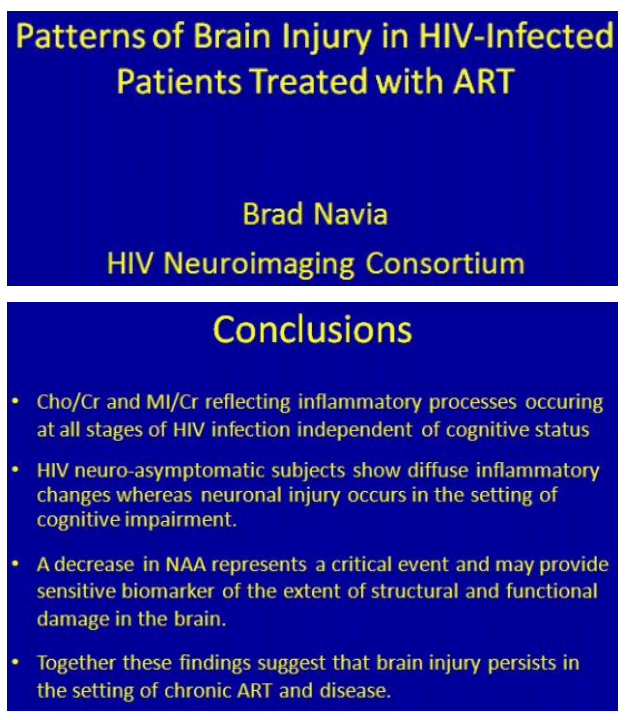
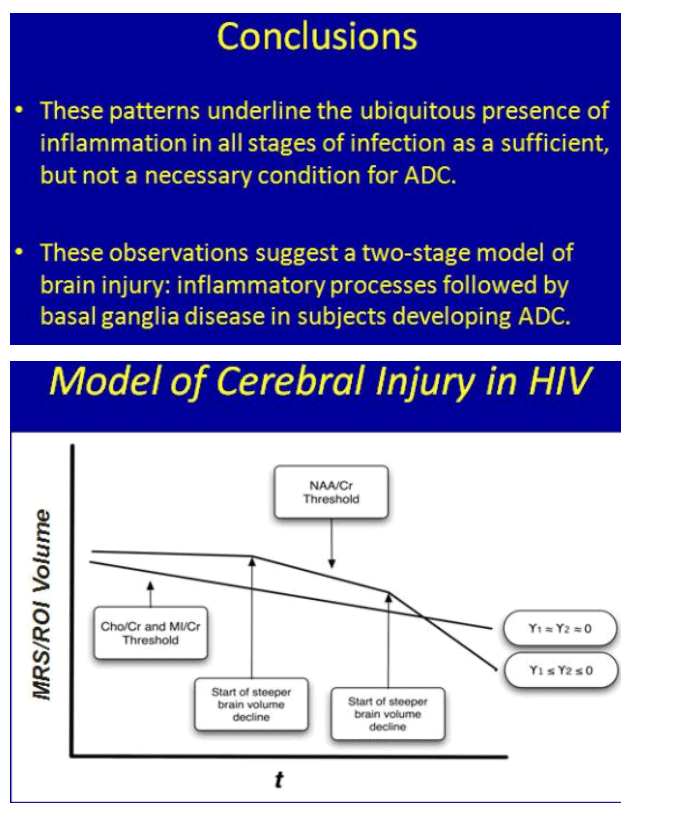
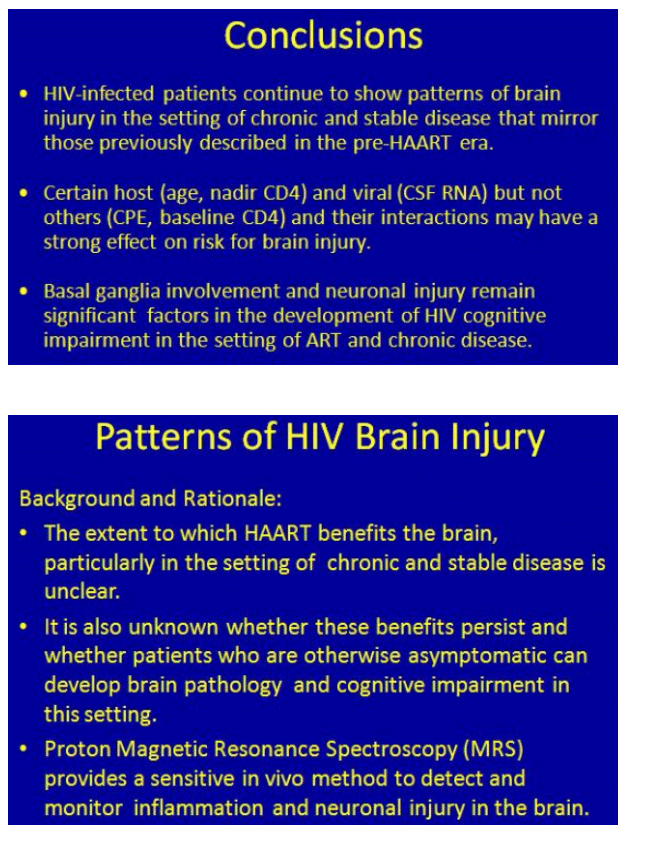
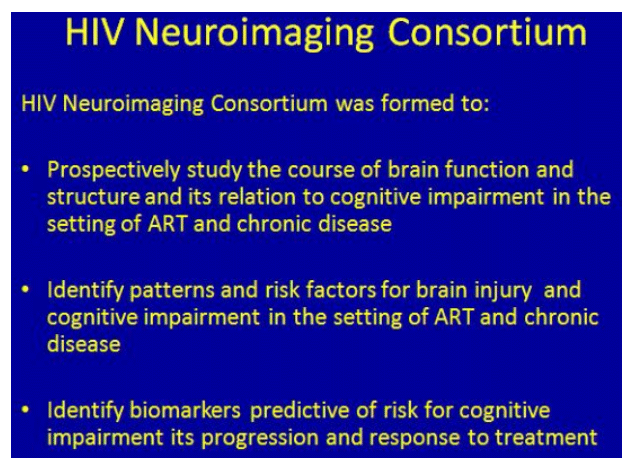
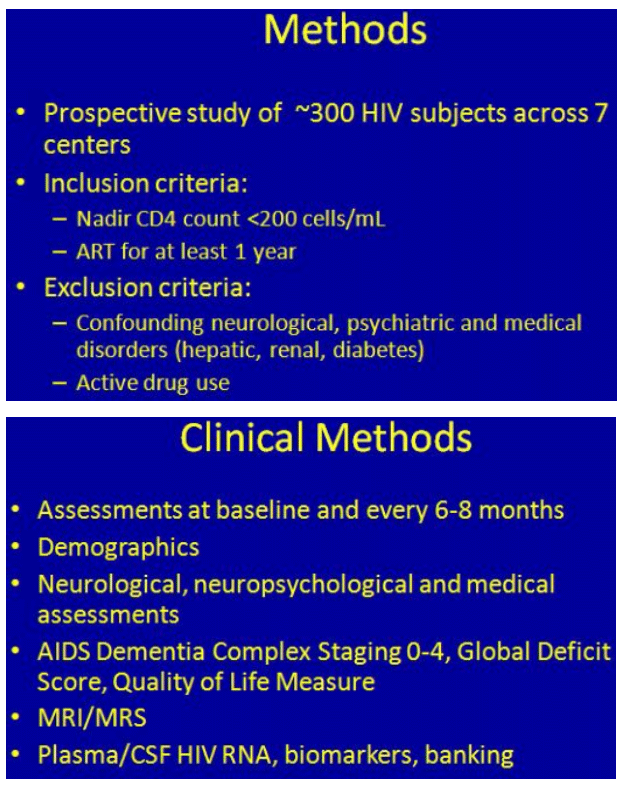
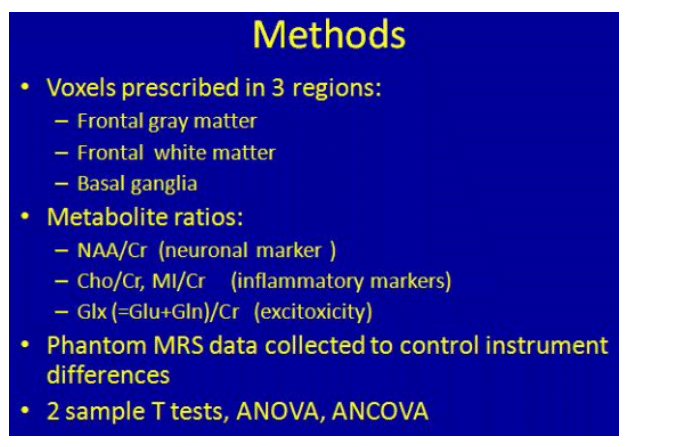
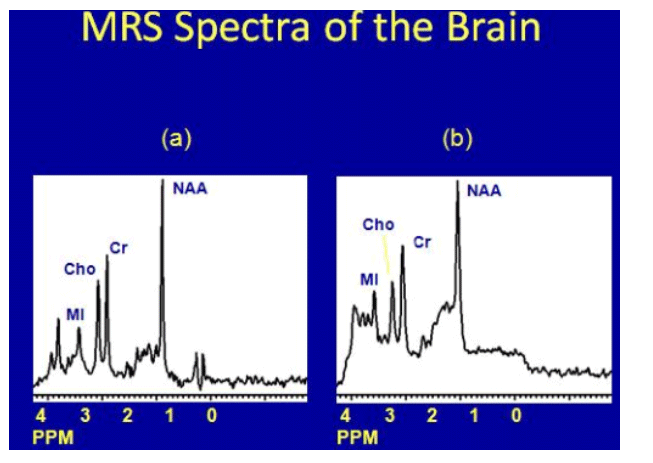
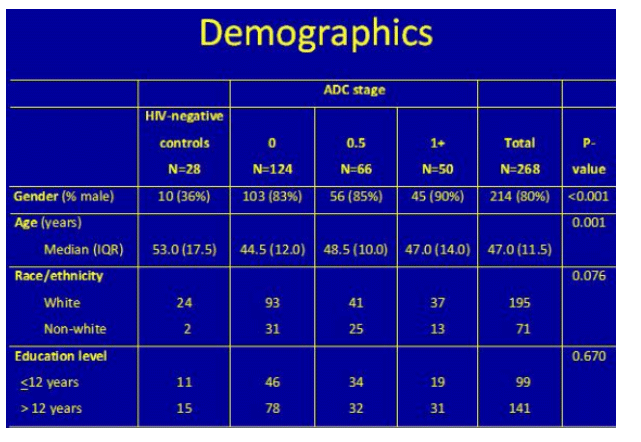
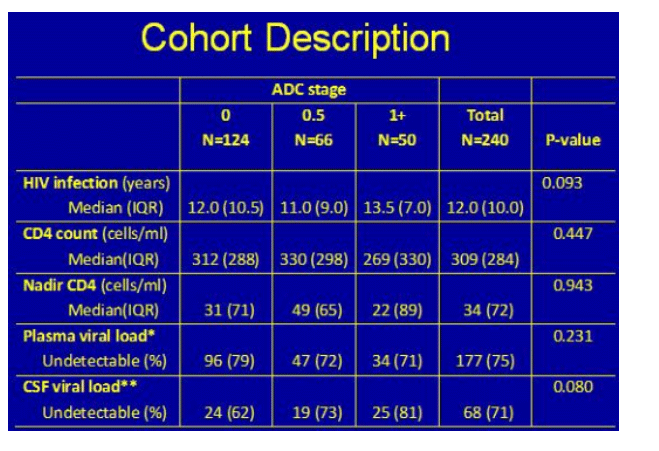
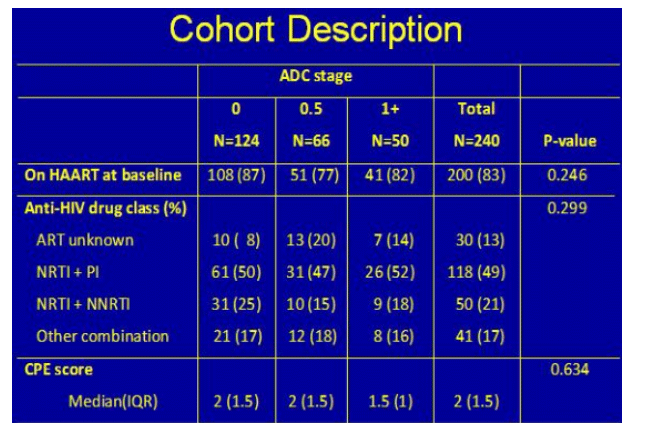
"This baseline data analysis, which were adjusted for differences in age and gender, show significant inflammation in patients who were near aymptomatic across all brain regions. Subjects who were cognitively impaired showed similar patterns of inflammation in the 3 brain regions, in addition they also showed decreases in the neural marker in the frontal white matter. When one compares the cognitively impaired patients to the neurologically asymptomatic patients the only difference is in the neuronal marker"
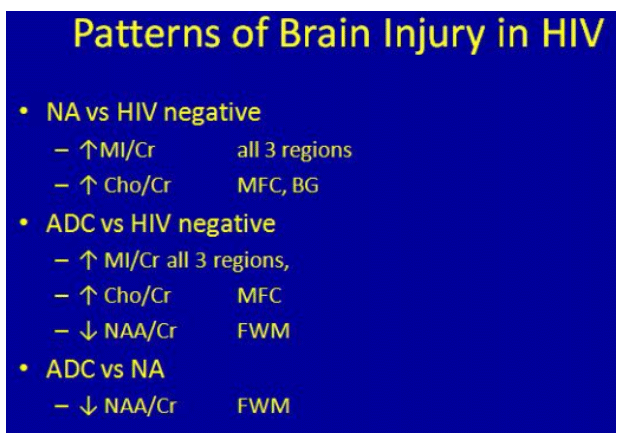
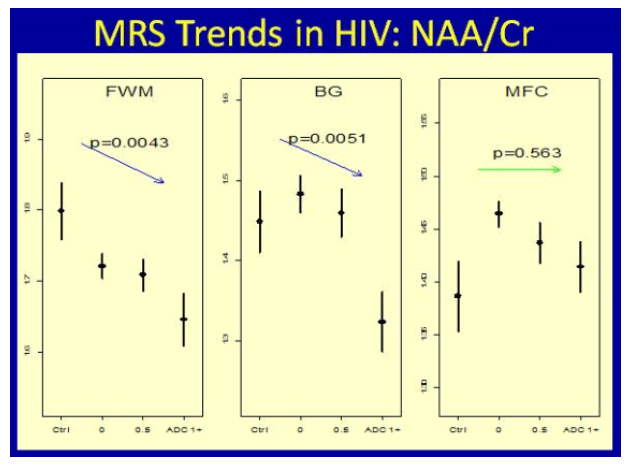
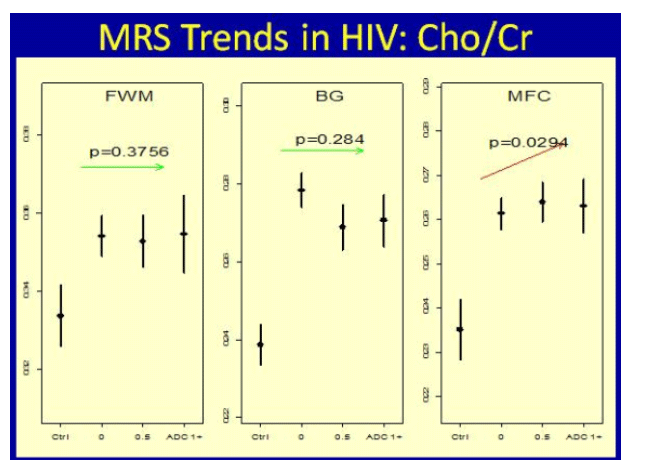
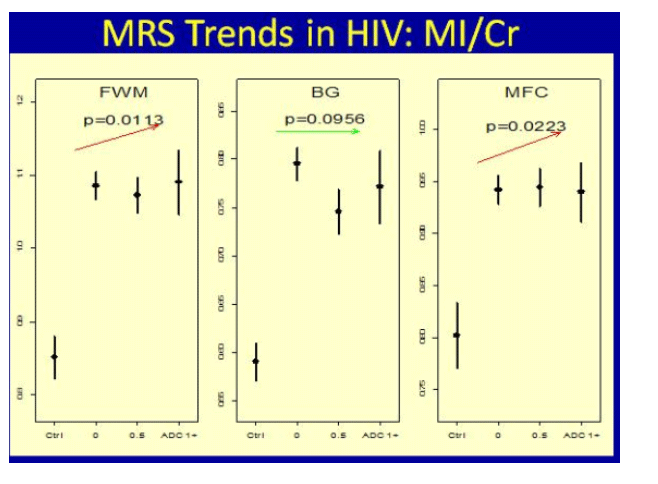
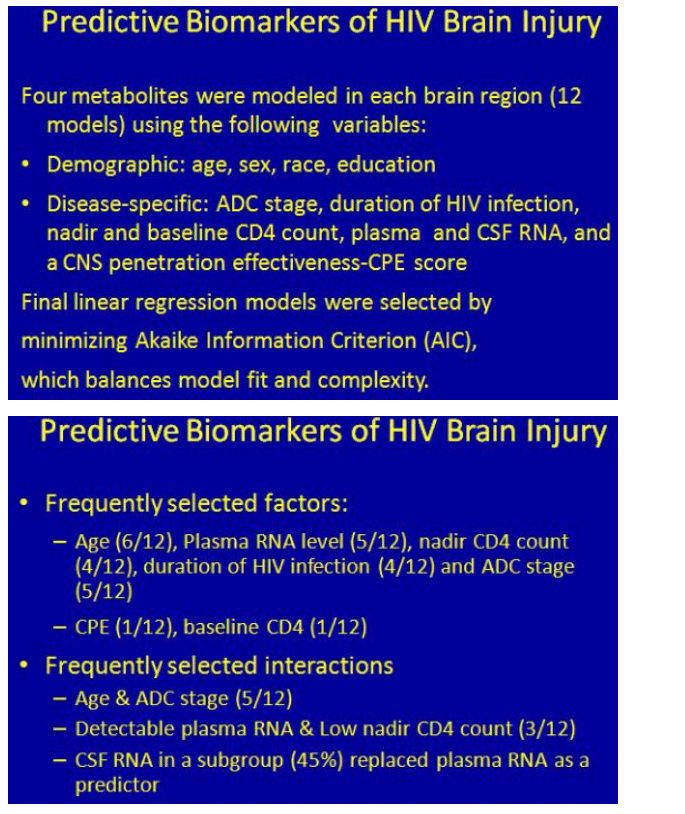
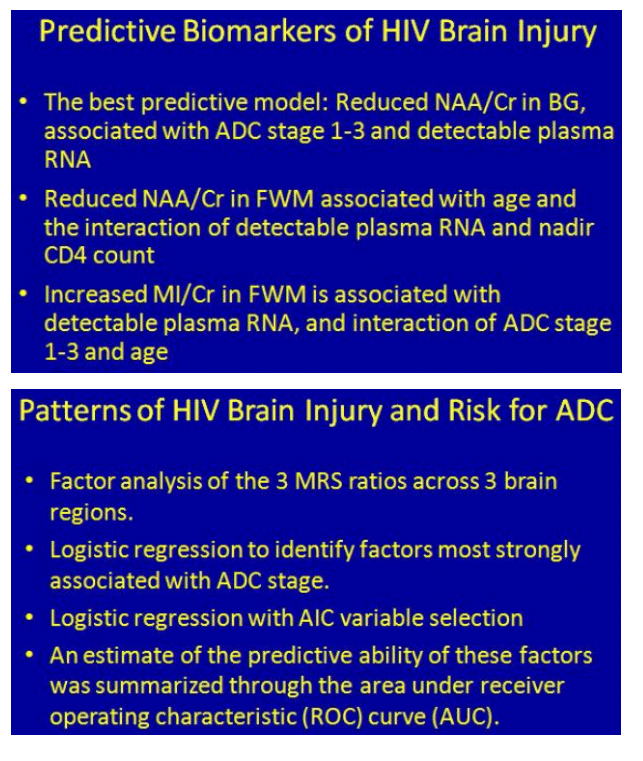
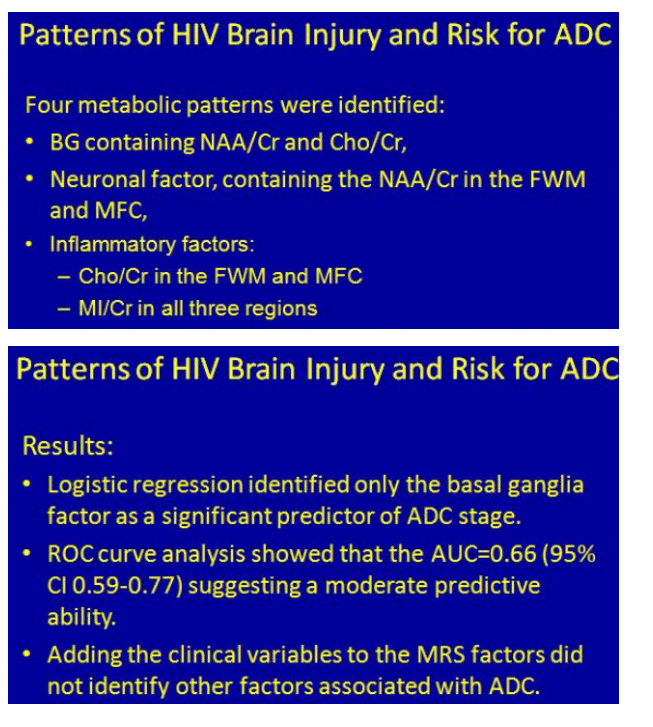
|
| |
|
 |
 |
|
|